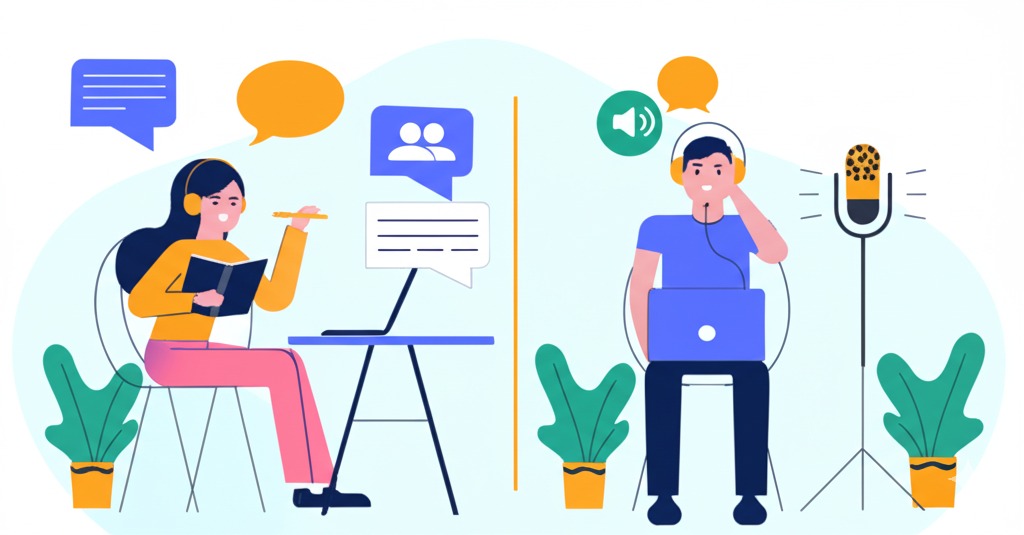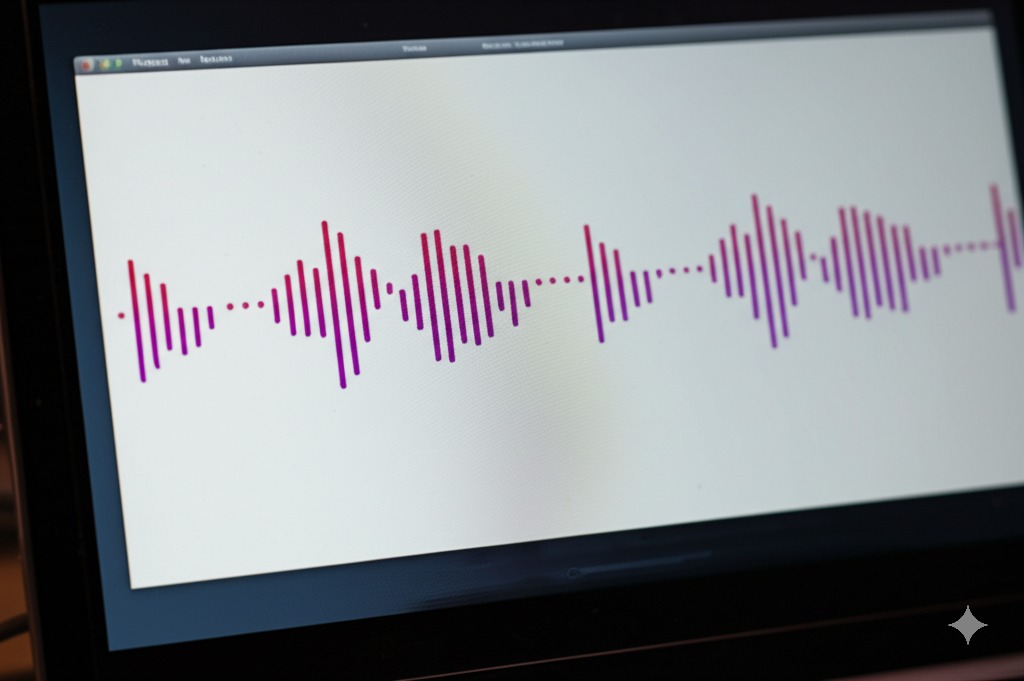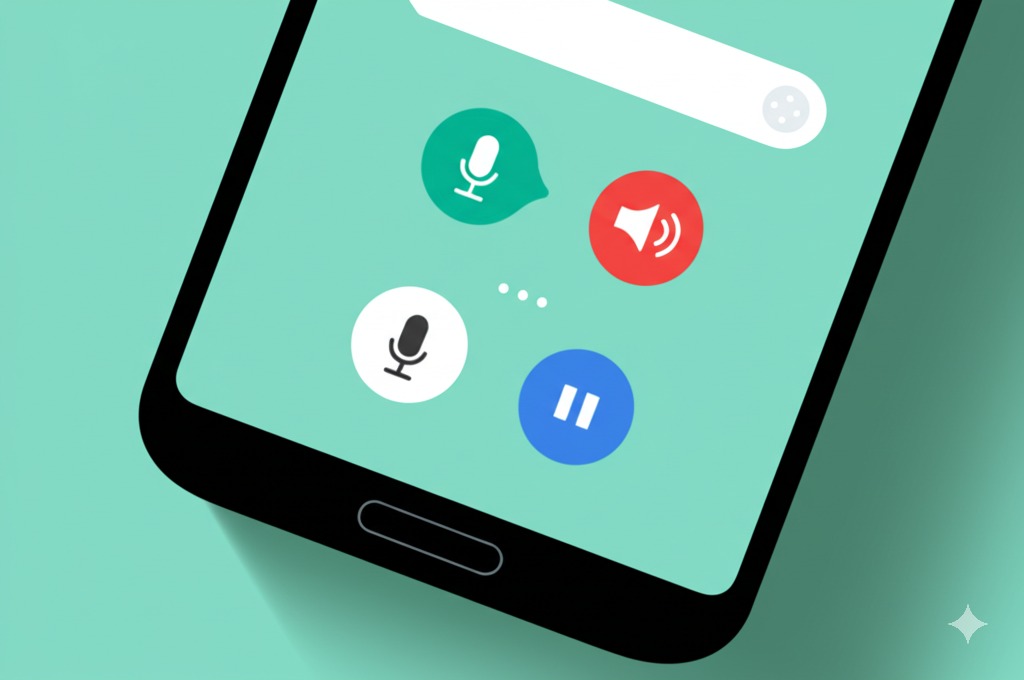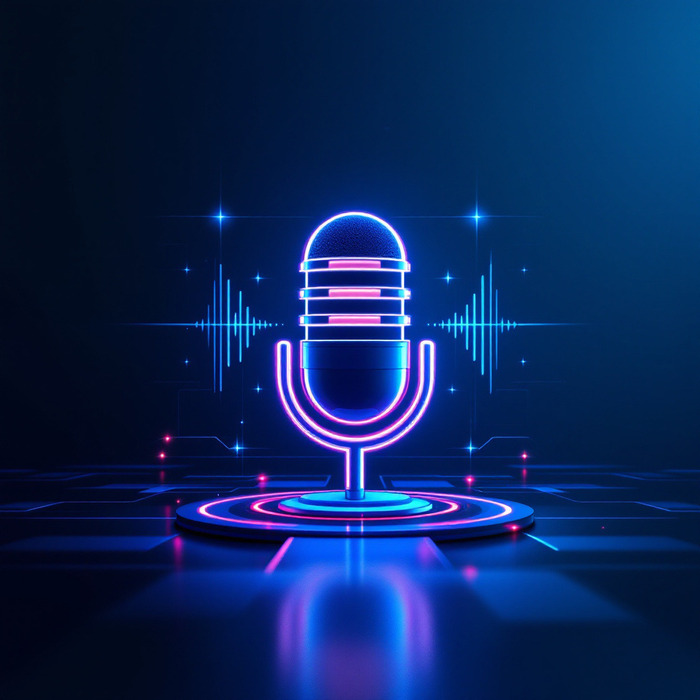
What is the difference between text to speech and speech to text?
Text to speech and speech to text are opposite technologies that serve different purposes. Text to speech turns written words into spoken audio – your computer reads text aloud for you. Speech to text does the reverse – it captures your voice and converts what you say into written text. Think of it this way: text to speech is for listening (reading with your ears), while speech to text is for writing without typing (typing with your voice). One turns reading into listening, the other turns talking into writing. They’re complementary technologies that help people communicate in different ways depending on their needs and situations.

Understanding Text to Speech Technology
Text to speech technology has come a long way from the robotic voices of early computer systems. Modern TTS engines use advanced AI to create natural-sounding speech from written content. The technology works by analyzing text, breaking it down into phonetic components, and then generating audio that mimics human speech patterns.
Today’s text to voice conversion tools offer various voices, accents, and languages. Some even include emotional inflections to make the speech sound more natural. For a deeper understanding, check out our article on the evolution of text-to-speech technology.
How Speech to Text Works
Speech to text technology (also called voice recognition or speech recognition software works by capturing audio from a microphone, analyzing the sound patterns, and matching them to words in its vocabulary. Modern systems use machine learning to improve accuracy over time.
iPhone users can find this feature built into their devices. Learn more about how to use it effectively in our guide to iPhone speech to text functionality.
Try the Text-to-Voice App: Simply Paste Your Text and Listen!
Test the Text-to-Voice app by pasting your text into the app and listening as it transforms written content into clear, natural-sounding speech. It’s easy to use and perfect for anyone looking to convert text to audio quickly and effortlessly. Try it out now and discover how convenient it can be!
Key Applications of Text to Speech
Text to speech has found numerous applications across different fields:
- Accessibility tools for visually impaired users
- Audio content creation for podcasts and audiobooks
- E-learning materials with narration
- Navigation systems and virtual assistants
- Converting written documents to audio for multitasking
Game developers are increasingly using this technology to create immersive experiences. Learn more about AI text-to-speech for games in our detailed guide.
Some users look specifically for text to speech with natural human voices to create more engaging content. Others need text to speech tools that work offline for use in areas with limited connectivity.
Popular Uses for Speech to Text
Speech to text serves different purposes:
- Dictation for faster document creation
- Meeting transcription and note-taking
- Accessibility for people with mobility limitations
- Voice commands for devices and software
- Converting spoken lectures to written notes
Many professionals are looking for speech to text for medical documentation to streamline patient records, while students often need real-time speech to text for classroom notes to keep up with fast-talking professors.
Comparing Text to Speech and Speech to Text
While both technologies deal with converting between text and speech, they have distinct characteristics:
| Feature | Text to Speech | Speech to Text |
|---|---|---|
| Input | Written text | Voice audio |
| Output | Spoken audio | Written text |
| Primary users | Readers, content consumers | Writers, content creators |
| Common devices | E-readers, audiobook players | Dictation software, transcription tools |
| Accuracy challenges | Pronunciation, inflection | Accent recognition, background noise |
For creative applications, text to speech is often used in entertainment. Check out our article on AI voice actors in animation to see how this technology is changing the industry.
Text to Speech Benefits
Text to speech offers several advantages:
- Makes content accessible to visually impaired users
- Allows multitasking while consuming content
- Helps with learning pronunciation and language skills
- Provides alternative way to consume written material
- Enables audio versions of written content for on-the-go listening
For educational settings, see how AI voiceovers for e-learning are transforming online education.
Speech to Text Advantages
Speech to text technology provides different benefits:
- Enables hands-free writing and note-taking
- Typically faster than typing for most people
- Helps people with motor disabilities create written content
- Useful for transcribing interviews and meetings
- Creates searchable text from audio recordings

Tools That Combine Both Technologies
Some advanced platforms offer both text to speech and speech to text capabilities:
Speechify
Speechify provides excellent text to speech conversion with natural-sounding voices, while also offering speech recognition for dictation. Their mobile app makes it easy to switch between both functions.
Play.ht
Play.ht focuses primarily on text to speech with remarkably human-sounding voices, but also provides integration with speech to text services for a complete solution.
Cost Considerations
When choosing between text to speech and speech to text tools, cost is often a factor:
- Basic versions of both technologies are available for free
- Premium text to speech services offer better voices and more features
- Advanced speech to text systems provide higher accuracy and specialized vocabulary
For budget-conscious users, explore our guide to free text-to-speech costs to find affordable options.
Future Trends
Both text to speech and speech to text technologies continue to evolve rapidly:
- Voice cloning allows text to speech systems to mimic specific individuals
- Improved emotional expression in synthesized speech
- Real-time speech to text translation across languages
- Context-aware transcription for better accuracy
The best text to speech apps for fiction writing are now integrating character voices and emotional tones. Meanwhile, multilingual speech to text conversion software is breaking down language barriers in global business.
The future looks promising for both technologies. Learn more about emerging developments in our article on future trends in text-to-speech industry.
Making the Right Choice
Deciding whether you need text to speech or speech to text depends on your specific requirements:
- Need to consume content while busy with other tasks? Text to speech is your answer.
- Want to create written content without typing? Speech to text is the solution.
- Require accessibility options for different abilities? You might need both.
Many users find value in using both technologies for different situations.
Conclusion
Text to speech and speech to text represent two sides of the same communication coin. One converts written words to spoken language, while the other does the opposite. Though they work in reverse ways, both technologies aim to make communication more accessible, efficient, and flexible.
As AI continues to improve, we can expect both technologies to become more natural and integrated into our daily lives. Whether you’re looking to listen to articles while commuting or dictate your next novel without typing, these complementary technologies offer practical solutions for modern communication needs.

Frequently Asked Questions
Can text to speech understand different languages?
Yes, most advanced text to speech systems support multiple languages, though quality may vary.
How accurate is modern speech to text technology?
Today’s speech recognition can achieve 95%+ accuracy in good conditions with clear speech.
Can I use text to speech for creating audiobooks?
Absolutely. Many authors use text to speech to create audiobook versions of their work. Learn more in our guide on copyright laws for AI-generated audiobooks.
Does speech to text work without an internet connection?
Some basic speech recognition works offline, but the most accurate systems typically require internet access.
Can text to speech create different voice styles?
Yes, modern systems offer various voices, ages, genders, accents, and even emotional tones.
Is speech to text good enough for professional transcription?
For most purposes yes, though human transcriptionists may still be preferred for complex audio or legal/medical content.
Sources:
https://www.linkedin.com/pulse/text-speech-vs-whats-difference-oriserve-805ec

